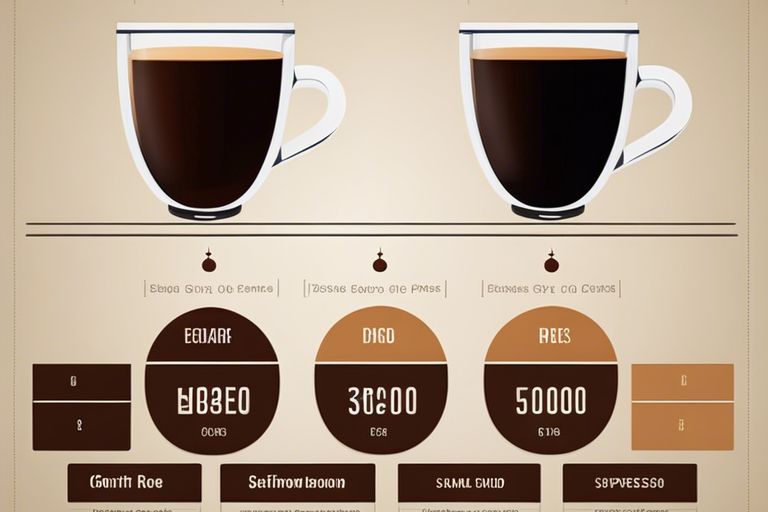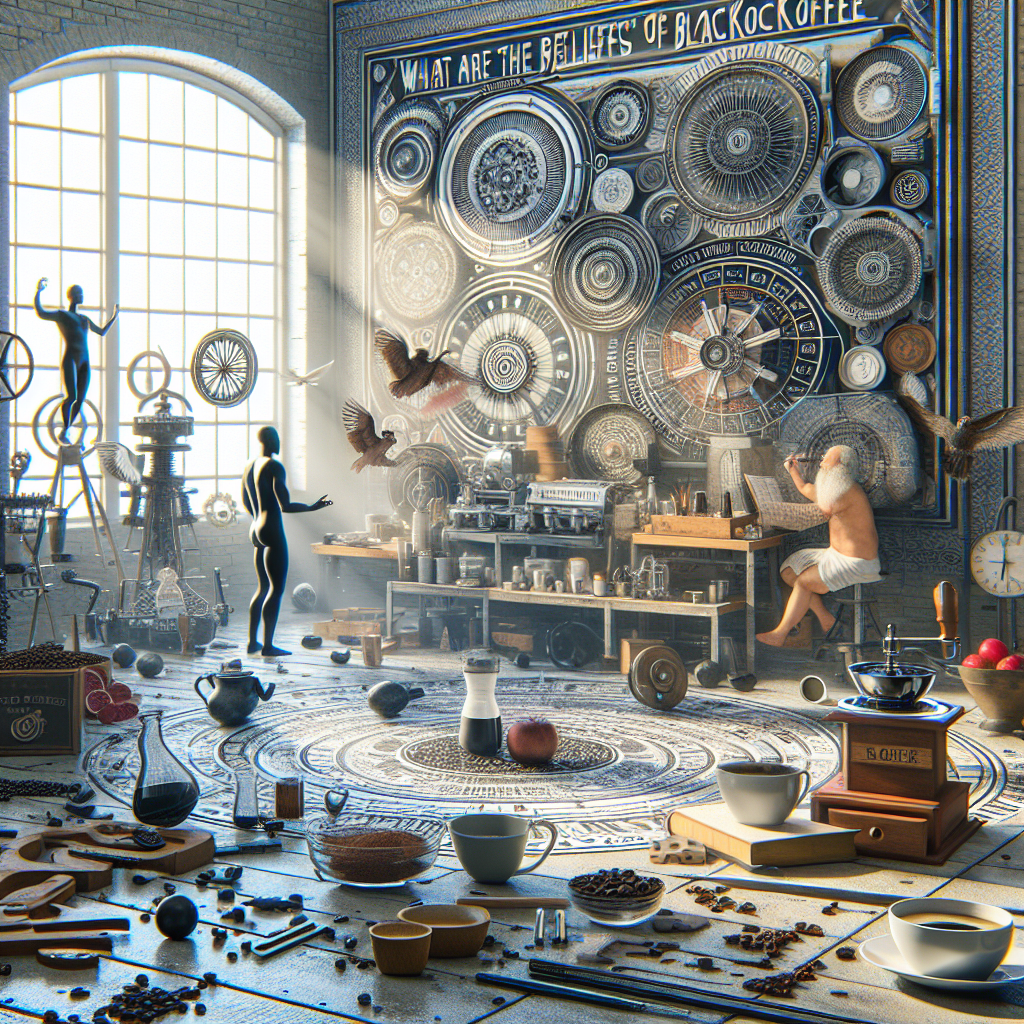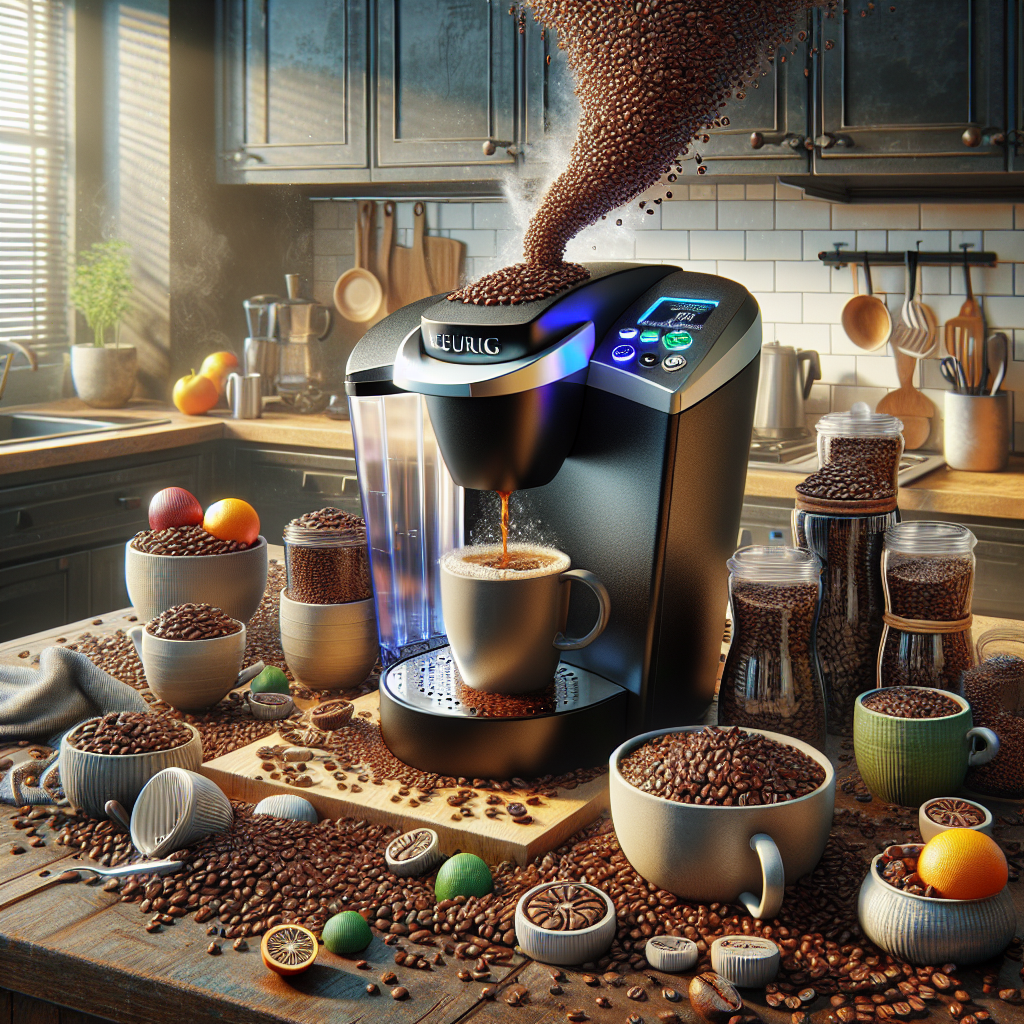It’s key to understand the distinction between espresso and regular coffee for any coffee enthusiast. While both are brewed from coffee beans, the method of preparation and intensity of flavors set them apart. Espresso, a concentrated shot, is made by forcing hot water through finely-ground beans, resulting in a rich, strong flavor. On the other hand, regular coffee is brewed by dripping hot water over coarser grounds, creating a milder taste. So, whether you prefer a quick pick-me-up or a leisurely cup, knowing the nuances between espresso and regular coffee will help you savor each sip.
Key Takeaways:
- Extraction Method: Espresso is made by forcing hot pressurized water through tightly packed coffee grounds, resulting in a concentrated and flavorful shot. Regular coffee is brewed by pouring hot water over coffee grounds and letting it drip through a filter.
- Flavor and Intensity: Espresso is known for its intense, bold flavor due to the high-pressure extraction process, while regular coffee tends to be milder and more balanced in taste.
- Serving Size: Espresso is a small 1-2 oz. shot typically served in a demitasse cup, whereas regular coffee is served in larger quantities, ranging from 8-16 oz. per cup.
- Caffeine Content: Despite being more concentrated, a single shot of espresso contains less caffeine compared to a standard cup of regular coffee due to the serving size difference.
- Crema: A defining characteristic of espresso is its velvety layer of crema, a rich golden-brown foam that forms on top of the shot, enhancing the taste and aroma. Regular coffee does not typically have this crema layer.

Coffee Basics
What is Coffee?
Any coffee lover knows that coffee is more than just a beverage – it’s a ritual, a lifestyle. Coffee is a brewed drink made from roasted coffee beans, which are the seeds of berries from the Coffea plant. It’s commonly known for its stimulating effects due to its caffeine content, but for many, it’s also a comforting and flavorful companion throughout the day.
Coffee Beans and Roasting
For those who are intrigued by the world of coffee, understanding the basics of coffee beans and roasting is important. Coffee beans are the pit inside the red or purple fruit often referred to as a cherry. These beans are harvested, processed, dried, roasted, ground, and brewed to create the cup of coffee we all know and love.
For instance, the roasting process plays a crucial role in determining the flavor profile of the coffee. Lighter roasts tend to preserve more of the bean’s original flavors and acidity, while darker roasts develop richer, bolder flavors with less acidity. The choice of beans and the roasting method can significantly impact the final taste of your coffee.

Espresso Essentials
Definition and Origins
Origins of espresso can be traced back to Italy, where it was first developed in the early 20th century. Espresso is a concentrated coffee brewed by forcing a small amount of nearly boiling water through finely ground coffee beans. This method results in a strong, rich flavor with a layer of crema on top, which is a sign of a well-made espresso.
Espresso Roast and Grind
An necessary component of espresso is the roast and grind of the coffee beans. Espresso requires a dark roast to bring out the bold flavors and oils in the beans. The grind is crucial as well; espresso calls for a fine grind that is almost powdery in texture to ensure proper extraction of flavors during the brewing process.

Brewing Methods
Drip Brewing for Regular Coffee
An vital difference between espresso and regular coffee lies in the brewing methods used. Unlike the intense pressure and quick extraction process of espresso machines, regular coffee is typically brewed using drip methods. An automatic drip coffee maker slowly drips hot water over ground coffee, allowing the flavors to extract gradually.
This method produces a more diluted and milder coffee compared to espresso. Drip brewing is popular for its convenience and ability to make larger quantities of coffee at once, making it ideal for daily consumption.
Espresso Machine and Technique
Espresso, on the other hand, is crafted using specific espresso machines and techniques. An espresso machine forces pressurized hot water through finely-ground coffee beans, resulting in a concentrated and rich shot of coffee with a layer of crema on top.
Plus, espresso is typically served in smaller quantities due to its intense flavor profile. The technique of tamping the coffee grounds, controlling the water temperature, and timing the extraction process are crucial factors in creating the perfect shot of espresso.
Flavor Profiles
Despite their similar brewing process, espresso and regular coffee offer distinct flavor profiles that appeal to different palates.
Regular Coffee: Nuances and Notes
An everyday cup of regular coffee boasts a wide range of flavors, depending on the origin of the beans, the roasting process, and the brewing method. From the bright acidity of a light roast with fruity undertones to the rich, caramel notes of a dark roast, regular coffee offers a diverse spectrum of flavors to explore and savor.
Espresso: Intensity and Complexity
Profiles of espresso are characterized by their intense and complex nature. The concentrated extraction process of espresso results in a bold and full-bodied flavor with a layering of notes ranging from bittersweet chocolate to nutty undertones. This concentrated form of coffee requires a skilled hand to achieve a balanced and nuanced flavor profile that is both intense and satisfying.
Another key aspect of espresso’s flavor profile is its crema, a creamy foam that sits atop a well-pulled shot. The presence of crema not only adds a velvety texture to the espresso but also enhances the overall flavor experience, making each sip a luxurious indulgence.
Caffeine Content
Many coffee drinkers are interested in understanding the caffeine content of their favorite brews. Caffeine levels can vary significantly between espresso and regular coffee due to the differences in brewing methods.
Regular Coffee: A Typical Cup
Regular coffee, brewed through methods like drip or French press, generally contains more caffeine than espresso per serving. A typical cup of regular coffee, which is about 8 ounces, can contain anywhere between 80-120 milligrams of caffeine, depending on factors like the type of beans, brewing time, and water temperature.
Espresso: A Shot of Energy
With espresso, the brewing process involves forcing hot water through finely-ground coffee beans at high pressure. This method extracts a concentrated shot of coffee in a smaller serving size compared to a regular cup. A single shot of espresso, which is around 1 ounce, can contain approximately 63 milligrams of caffeine. Despite the lower volume, the caffeine concentration in espresso is higher than that of regular coffee.
Shot of espresso is often the preferred choice for those seeking a quick caffeine boost without consuming a large volume of liquid. Its intense flavor and higher caffeine content make it a popular choice for many coffee enthusiasts looking for a bold and concentrated coffee experience.
Cultural Significance
For Coffee vs Espresso: What’s The Difference?, both espresso and regular coffee play significant roles in various cultures around the world. Let’s explore the cultural significance of these caffeinated beverages.
Coffee Culture Around the World
Worldwide, coffee holds a special place in many cultures, with each region having its unique traditions and preferences. In Ethiopia, the birthplace of coffee, the ceremony of brewing and serving coffee is a time-honored tradition that brings communities together. In Turkey, coffee plays a central role in social gatherings, with the preparation and serving process being steeped in centuries-old rituals.
Espresso’s Italian Heritage
Cultural significance of espresso is deeply rooted in its Italian heritage. In Italy, espresso is not just a beverage but a way of life. Italians take their espresso seriously, sipping it slowly while engaging in lively conversations or taking quick shots in bustling cafes. The espresso culture in Italy has influenced coffee traditions worldwide, shaping the way we enjoy and appreciate this strong and flavorful brew.
Espressos are not just about caffeine; they represent a moment to pause, connect with others, and savor the rich flavors in a tiny cup. Whether enjoyed standing at a bustling Italian espresso bar or leisurely sipped in a cozy cafe, espresso embodies the essence of Italian culture and hospitality.
Conclusion
Following this exploration of the differences between espresso and regular coffee, it is clear that the two beverages vary in their brewing method, flavor, and caffeine content. While espresso is brewed quickly under high pressure, resulting in a concentrated and bold taste, regular coffee is brewed using a longer process, leading to a milder and more diluted flavor profile.
To further explore into the topic, check out this discussion on Are coffee beans and espresso beans the same? and continue expanding your knowledge of coffee brewing methods and bean varieties.
FAQ
Q: What is espresso?
A: Espresso is a concentrated coffee made by forcing a small amount of nearly boiling water through finely ground coffee beans.
Q: What is regular coffee?
A: Regular coffee is made by steeping coarsely ground coffee beans in hot water, allowing the flavors to be extracted over time.
Q: How is the brewing process different between espresso and regular coffee?
A: Espresso is brewed quickly under high pressure, usually taking around 25-30 seconds, while regular coffee is brewed through a slower drip or immersion method, taking a few minutes.
Q: What is the caffeine content difference between espresso and regular coffee?
A: Espresso is more concentrated, containing about 63 mg of caffeine per 1 oz shot, whereas a standard 8 oz cup of regular coffee has around 95 mg of caffeine.
Q: How is the taste profile different between espresso and regular coffee?
A: Espresso is known for its intense, bold flavor with a thicker crema, while regular coffee has a milder taste and a lighter body due to longer brewing times.








